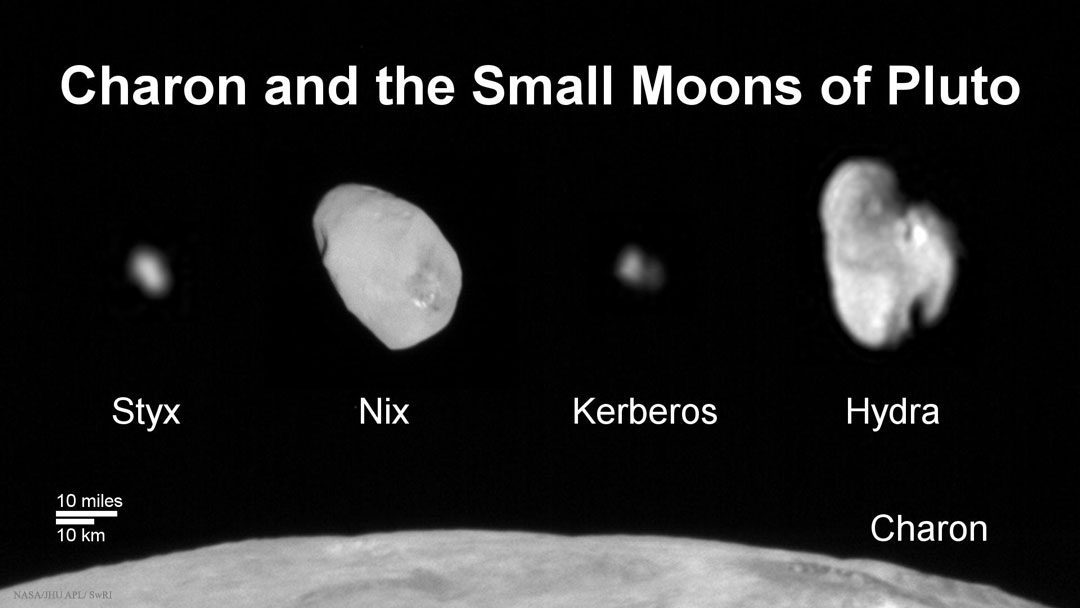
Copyright:
原文:
What do the moons of Pluto look like? Before a decade ago, only the largest moon Charon was known, but never imaged. As the robotic New Horizons spacecraft was prepared and launched, other moons were identified on Hubble images but remained only specks of light. Finally, this past summer, New Horizons swept right past Pluto, photographed Pluto and Charon in detail, and took the best images of Styx, Nix, Kerberos, and Hydra that it could. The featured image composite shows the results — each moon is seen to have a distinct shape, while underlying complexity is only hinted. Even though not satisfyingly resolved, these images are likely to be the best available to humanity for some time. This is because the moons are too small and distant for contemporary Earth-based telescopes to resolve, and no new missions to the Pluto system are planned. Gallery: October’s Venus, Jupiter, & Mars Conjunction
中文翻譯:
在十年前,只有最大的月球查倫(Charon)被確認存在,但從未被拍攝過。隨著機械探測器新地平線號(New Horizons)準備和發射,其他月球在哈勃太空望遠鏡的影像中被識別,但當時它們只是一點點光點。直到最近的夏天,新地平線號在掠過冥王星時,拍攝到了這個系統中冥王星及查倫的詳細影像,也拍攝了斯提克斯(Styx)、尼克斯(Nix)、克貝瑞斯(Kerberos)和海德拉(Hydra)的最佳影像。這些影像顯示出每顆月球都有獨特的形狀,而潛在的複雜性則僅僅被暗示。儘管未能獲得令人滿意的解析度,但這些影像很可能是人類在可見的未來最好的一手資料,因為這些小而遙遠的月球對於當前地球的望遠鏡來說無法進行解析,而未來也沒有新的任務計劃前往冥王星系統。
#冥王星 #查倫 #斯提克斯 #尼克斯 #克貝瑞斯 #海德拉 #新地平線號 #太空探索 #天文學 #NASA #神秘月球 #太空影像
來源:NASA每日圖片


